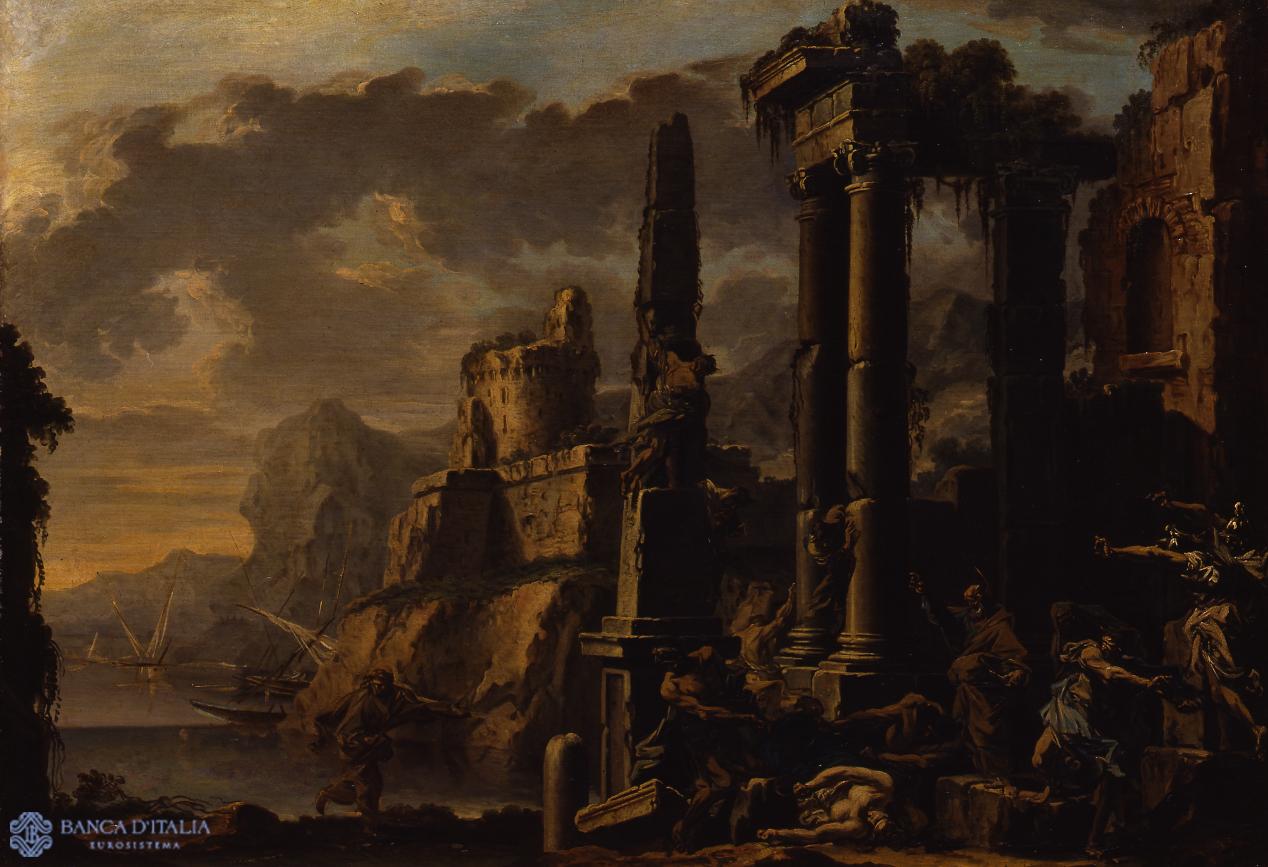Magnasco was one of the most important Italian painters of the 18th century, known for having revived the tradition of Italian landscape art by introducing aesthetical and artistic elements later found in the Romantic period.
He was born in Genoa on 4 February 1667 and began training under his father Stefano. He moved to Milan in 1681-82 following a Genoese merchant and there became apprenticed to Filippo Abbiati. In Milan, Magnasco focused on portrait painting but at the same time was greatly affected by the work of his contemporary Marco Ricci.
From 1703 to 1711 he settled in Florence, entering the service of the Grand Duke Gian Giacomo de’ Medici. During this period he was strongly influenced by his studies of the paintings and engravings of Stefano della Bella, Jacques Callot, Salvator Rosa, Giuseppe Maria Crespi and Giovanni Domenico Ferretti, who had preceded him at the Medici court. He returned to Milan in 1711 to create the ephemera for the triumphant entry into the city of the Holy Roman Emperor Charles VI. He also received several commissions for paintings from Count Colloredo, the city’s Austrian governor. In 1735 he moved permanently back to the city of his birth, where he painted, among other, the famous Reception in a Garden at Albaro (Galleria di Palazzo Bianco, Genoa). Towards the end of his life he painted mainly tiny figures for Antonio Francesco Peruzzini and Clemente Spera. He died on 12 March 1749.
Alessandro Magnasco
Alessandro Magnasco (Genoa 1667 - Genoa 1749)
18th century AD

Compiler
Alessandro Zuccari


